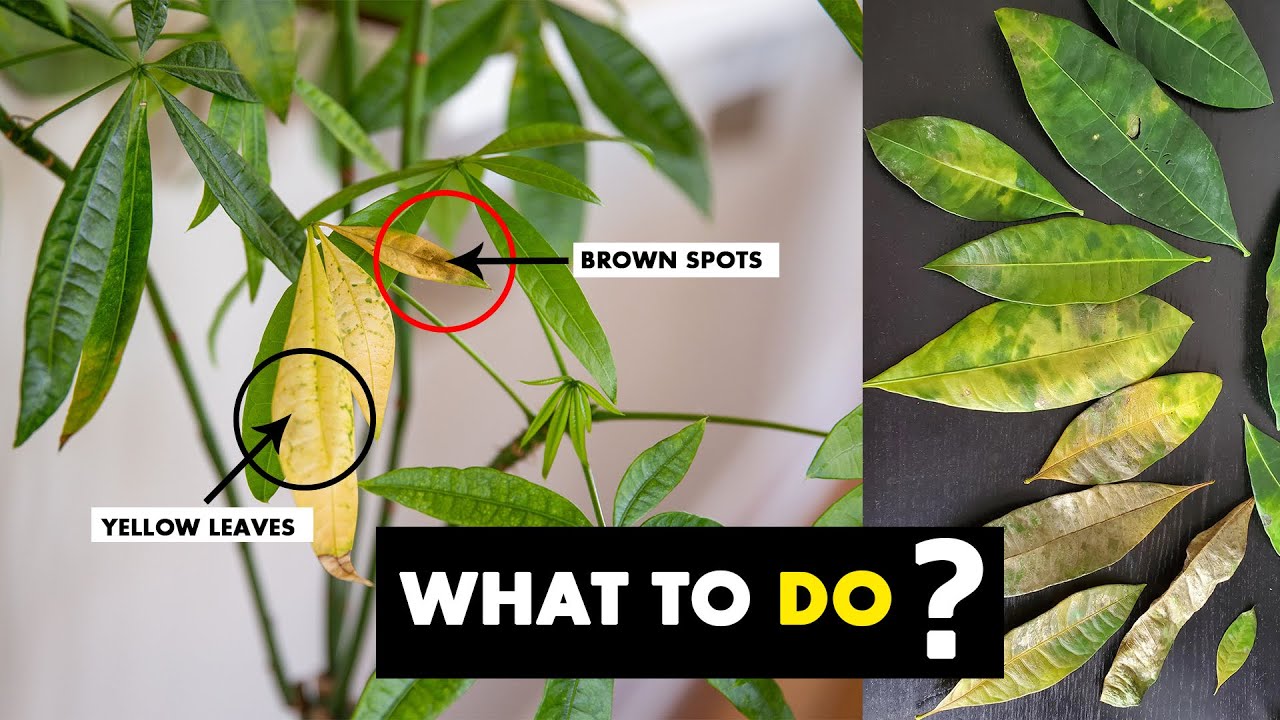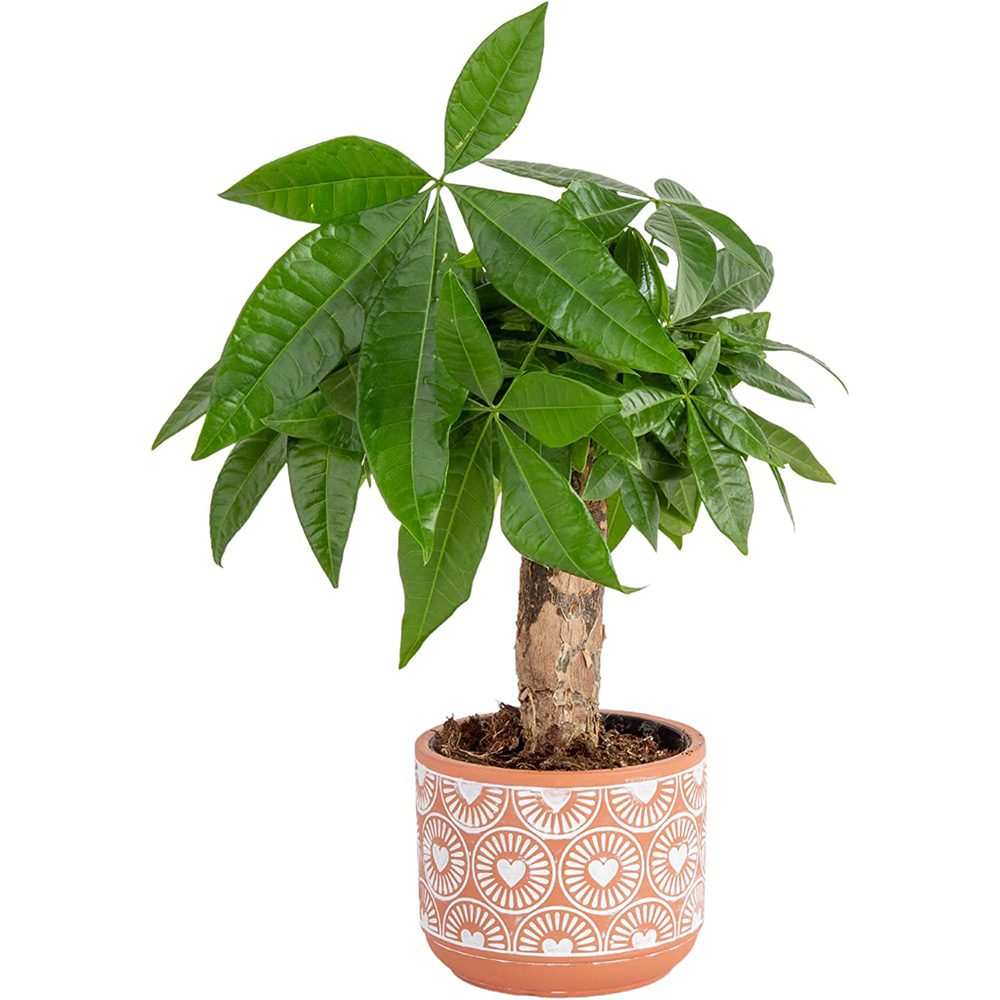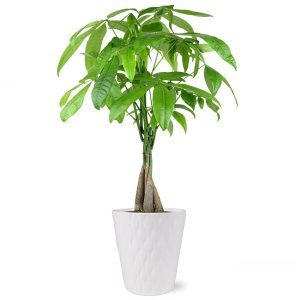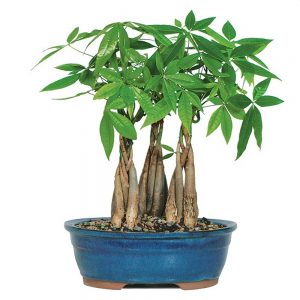- No products in the cart.
Money Tree Bonsai are believed to bring good fortune with proper care, but unfortunately, one common problem is money tree leaves turning brown, which can attract bad luck and negative energy. Brown leaves on Money Trees are usually the result of various factors such as inadequate watering, improper lighting, overfertilization, temperature changes, pest infestations, and diseases. To remedy these issues, it is important to maintain a proper watering and fertilizing schedule, avoid abrupt temperature changes, and regularly check for pest infestations or disease outbreaks.
The browning of leaves can indicate several diseases that can gradually damage the entire Money Tree plant. This article provides guidance on how to retain the green leaves of your Money Tree and prevent further damage.
What Causes Money Tree Leaves Turning Brown? (with Treatment and Prevention)
Money Tree, also known as Pachira aquatica, is a tropical tree that is evergreen-deciduous and originates from the forests of Central and South America. The plant’s palmately compound leaves and lifespan of 10-15 years make it a popular choice for home decor. Typically, aging Money Trees will develop brown leaves towards the bottom, but it is concerning to see brown leaves on a young Money Tree.
1. Watering problems
Inconsistent watering schedules can cause the leaves of Money Trees to become dry and turn brown.
Ideally, you should water your Money Tree with 0.1-0.2 liters of water every 1-2 weeks during spring and summer. Make sure to allow the soil to dry around 50-75% between watering sessions.
Brown and curled leaves in Money Trees can be caused by both underwatering and overwatering, although the symptoms of these two issues may differ slightly as they progress.
- Underwatering: Leaves gradually turn brown and brittle, starting from the tips and gradually spreading to the entire leaf.
- Overwatering: Leaves become droopy and eventually turn brown due to root rot, which causes the roots to be unable to absorb oxygen.
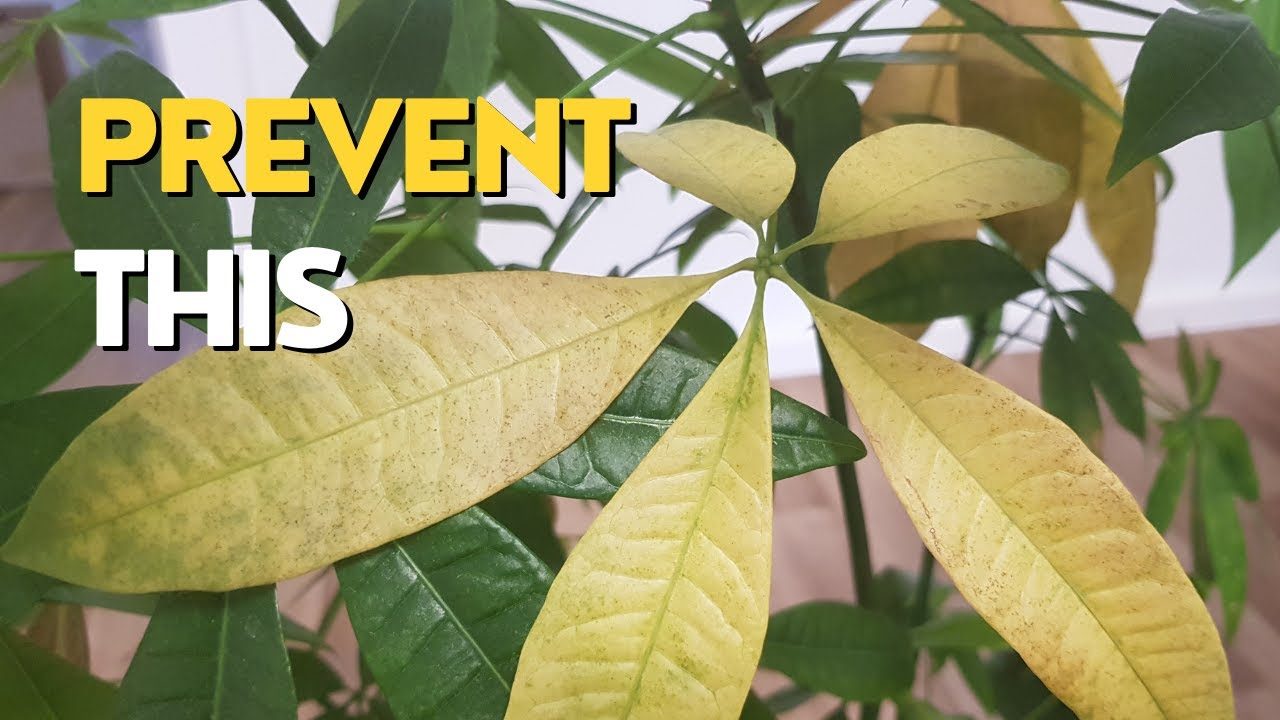
Treatment and Prevention
To avoid brown and curled leaves due to underwatering or overwatering, follow these steps:
- Check the soil’s top 2-4 inches with a finger-dip test every 2-5 days.
- Drain the saucer under the pot before and after watering.
- Add perlite or sand to the potting soil to improve drainage.
- Place the plant in full sun to evaporate excess water from the soil.
- Attempt bottom-up watering by placing the potted plant in a water bath for 24 hours.
- In the fall and winter, reduce watering and aerate the topsoil by poking holes with a pencil.
- Stop watering if excess water seeps from the drainage holes during watering sessions.
2. Inconsistent Fertilizing
Inconsistent fertilization can negatively affect the growth of Money Trees. Providing too little fertilizer can result in stunted growth, while overfertilizing can be even more harmful.
Money Trees typically need a well-balanced NPK fertilizer at half strength once a month during spring and summer. Liquid fertilizer is recommended for better soil permeability.
The Money Tree is not a plant that requires heavy feeding, but irregular overfeeding can harm its leaves even more.
- Overfertilization: can cause the tips of the leaves to turn brown, which can then spread to the margins and the entire leaf. Additionally, excess fertilizer salt can accumulate in the topsoil.
- Underfertilization: can result in the leaves turning pale yellow and later brown due to the insufficient nutrients reaching them.
Treatment and Prevention
Here are some treatment and preventive measures to address inconsistent fertilization in Money Trees:
- To remove the excess salts from the soil, you can flush it with distilled water 4-5 times.
- Apply fertilizer once every 6-12 months if you have a busy schedule.
- If the fertilizer salts persist, repot the plant with fresh soil.
- Dilute the fertilizer to half strength during application to avoid accumulation.
3. Lighting
Money Trees are native to tropical regions and prefer growing under the shade of tall trees in their natural habitat. Direct sunlight is not ideal for them, and prolonged exposure can cause leaf scorching.
Place Money Trees near an east-facing window indoors for 6 hours daily or in an outdoor spot with similar lighting and partial shade in the afternoon to prevent leaf burns.
However, insufficient lighting can be just as detrimental as direct sunlight, leading to severe consequences for Money Tree leaves.
- Low Light: Money Trees are unable to photosynthesize with insufficient sunlight, resulting in yellowing leaves that eventually turn brown and fall off.
- High Light: Leaves lose their color and turn yellow, with the tips and edges becoming brown or black and brittle due to excessive water loss.

Treatment and Prevention
- To prevent direct sunlight, place the plant at least 3-5 feet away from south-facing windows.
- Use drapes or curtains to create shade and protect the plant from intense sunlight.
- Prune the brown leaves to promote the growth of new leaves.
- Use grow lights to provide 10-12 hours of light and dark periods during winter.
- If planting Money Trees outdoors, choose a location with dappled sunlight or partial shade to avoid direct sunlight.
4. Temperature
Money Tree leaves turning brown can be caused by sudden changes in temperature, including both hot and cold extremes. This is because Money Trees are adapted to hot and humid tropical environments.
Maintain a temperature range of 65°F-80°F for Money Trees and protect them from temperatures below 30°F in winter.
To prevent the death of Money Trees due to temperature fluctuations, it’s crucial to take appropriate measures. In high temperatures, the leaves may turn brown starting from the tips and eventually shrivel due to water loss from the cells. On the other hand, low temperatures can lead to the formation of ice crystals in the cells, causing browning of the leaves, and the plant may start dropping its leaves.
Treatment and Prevention
To treat and prevent temperature-related issues for Money Trees, you can take the following measures:
- Regularly monitor the surrounding temperature using an indoor thermometer.
- Avoid placing the plant near heating and cooling sources like fireplaces, radiators, and air conditioners that can cause temperature fluctuations.
- During heat spells or if you live in hotter areas, mist the plant once a day.
- Protect the plant from cold drafts by relocating it away from north-facing windows.
- Cover outdoor Money Trees with frost blankets during winter to prevent damage from frost.
5. Pest and Diseases
Pests often take refuge on the undersides of Money Tree leaves, where they can feed without detection. Meanwhile, fungal pathogens and physiological imbalances are common culprits behind most diseases affecting Money Trees.
Money Trees are susceptible to various pests and diseases, including aphids, scales, whiteflies, gnats, spider mites, and mealybugs. Additionally, they may be prone to fungal diseases such as leaf spots and foliar blight.
The leaves of Money Trees can turn brown due to damage and cellular decay caused by pests and pathogens.
- Pests: Pests such as aphids, scales, whiteflies, gnats, spider mites, and mealybugs, can suck sap from the surface of the Money Tree leaves or around the petioles, which results in the formation of honeydew. The infected leaves turn yellow, and brown patches may develop later.
- Diseases: Diseases caused by fungal pathogens can also turn Money Tree leaves brown. These spores typically land on the leaf surface and thrive in high moisture environments. As the infection progresses, yellow rings or patches appear on the surface of the leaves, which later dry up and turn brown, eventually causing the entire leaf to deteriorate.
Treatment and Prevention
To treat and prevent Money Tree pests and diseases, you can take the following measures:
- Keep the affected plant away from other houseplants to avoid spreading the infection.
- Remove pests and honeydews manually by wiping the leaves with q-tips dipped in diluted isopropyl alcohol.
- Use sticky traps to prevent airborne pests from infesting your Money Tree.
- Apply neem oil, insecticidal soaps, or copper fungicides every two weeks to kill pests and deter pathogens until the infection subsides.
- Product on sale
 Mini Money Tree PlantOriginal price was: $45.00.$35.00Current price is: $35.00.
Mini Money Tree PlantOriginal price was: $45.00.$35.00Current price is: $35.00. - Product on sale
 Money Tree Plant BonsaiOriginal price was: $55.00.$39.99Current price is: $39.99.
Money Tree Plant BonsaiOriginal price was: $55.00.$39.99Current price is: $39.99. - Product on sale
 Money Tree Plant GroveOriginal price was: $69.00.$49.00Current price is: $49.00.
Money Tree Plant GroveOriginal price was: $69.00.$49.00Current price is: $49.00.
Should I Remove Brown Money Tree Leaves?
Leaves that have turned brown on Money Trees can drain resources that the plant could otherwise use for new growth and blooming in future seasons. Keeping infected leaves can also encourage the spread of infection to other parts of the plant, which can cause further harm.
- To begin the pruning process, start by cutting the entire brown leaf at the point where it meets the main stem.
- In addition, it’s recommended to prune any leggy growths to promote a more compact and balanced growth habit. After pruning, place the Money Tree in an area with filtered sunlight, making sure that the cut areas are facing the light source.
- After you have finished pruning, it is important to properly dispose of the brown leaves to prevent further spread of any disease. One effective method is to burn the leaves, which can help to reduce the disease extent.
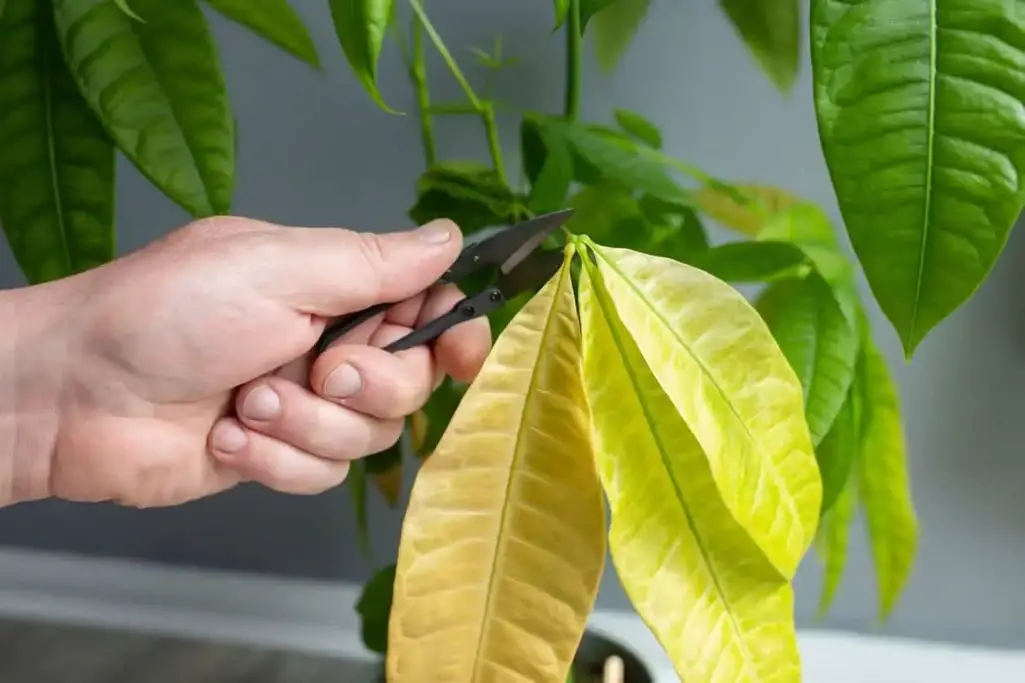
Read more about Money Tree Bonsai care:
- 4 Simple Methods to Propagate Money Tree Like a Pro
- Unlock Your Money Tree Plant’s Prosperity with the Best Soil: Essential Tips
- The Secrets of Money Tree Plant Care: Essential Tips from Soil to Watering
Frequently Asked Questions:
Why do Money Tree leaves turn brown?
Money Tree leaves may turn brown due to various reasons, including over or underwatering, pests and diseases, low humidity, or exposure to direct sunlight.
Should you remove brown leaves from Money Trees?
Yes, it is recommended to remove brown leaves from Money Trees as they can be a site for pathogens to grow and spread to other parts of the plant.
How do you fix brown leaves on Money Trees?
To fix brown leaves on Money Trees, start by identifying the cause of the browning. If it’s due to over or underwatering, adjust your watering habits accordingly. If it’s due to pests or diseases, take appropriate measures to treat the plant. Additionally, relocate the plant to an area that receives bright, indirect light to promote healthy growth.
Read more:

